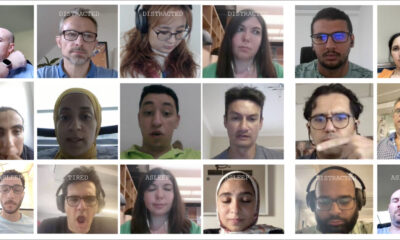Thought Leaders
The Controversies of AI in Advertising

Artificial intelligence has become part of everyday life. AI is making waves in many industries, from construction and manufacturing to health care. Advertising is also beginning to adopt AI tools to help make better marketing decisions and campaigns.
While it has become a powerful tool, the controversial nature of AI in advertising may keep some companies from embracing it. Some concerns are valid and could change the field moving forward.
How AI Is Changing Advertising
The rise of AI technology has given the advertising industry many powerful tools people can use to further their marketing efforts. Several programs allow AI to help organize the workflow and even automate specific tasks to make an ad campaign run smoother.
AI programs are very good at gathering and working with consumer data. Artificial intelligence can track what marketing trends and designs consumers are responding to and give suggestions to improve a campaign.
Artificial intelligence tools can also be applied to designing and developing products such as containers and ads. AI makes coming up with eye-catching designs easy, while copywriting programs can help write advertising scripts and text.
As technology improves, people will find more applications for AI tools in advertising. However, the controversial nature of AI in advertising throws its acceptability into question.
AI Replacing Human Workers
One of the most significant controversies about adopting artificial intelligence in the workplace is the fear that AI tools will replace humans in certain jobs. It is a valid concern, but not as worrisome as it might initially appear. Studies have shown that, while AI has phased out 1.7 million jobs since this century began, it will also create 97 million more by 2025.
AI and robotics might be taking on more redundant jobs from human workers, but new and more detail-oriented jobs that AI cannot do are appearing. Some involve maintaining these tools — something only humans can handle.
AI tools are becoming indispensable as advertising becomes more rooted in the digital world. However, marketing strategies will always need a human element. As social media advertising costs grow from $450 to $6,000 monthly, AI tools should help human agents while controlling expenses.
Trustworthiness of AI
Another big controversy surrounding intelligent machines is their trustworthiness. Although AI is much better at handling data than other computer programs, many people struggle to accept facts proven using it alone.
A survey conducted by the World Economic Forum found that, out of the 17,000 people surveyed, only half believed companies that use AI extensively were as trustworthy as those that don't rely on it as much.
Securing clients' trust is a big part of the advertising industry. Therefore, it is best to use AI tools in moderation. Relying too heavily on them can turn a client off to the firm's services.
AI Predictions Can Be Wrong
While predictions and analyses from AI can be very accurate, they can also be wrong. Several factors go into AI calculations.
Inaccurate data or programming bias can affect analysis results. Therefore, relying too much on AI tools for a marketing strategy can prevent it from failing. AI should be used with marketing expertise to ensure the information is accurate and the process is sound.
Bias in Artificial Intelligence
While it's commonly believed that artificial intelligence is free of discrimination and bias, the truth is murky. AI excels in gathering and working with data, which is controlled by its programming. If the parameters are biased toward certain information, users might not get an accurate sample to work with.
Data is critical in advertising. Advertising companies must gather the right information to create a strategy the target audience will be receptive to. Therefore, it is best to combine human marketing expertise with AI tools.
AI and Creativity
One of the most recent controversies regarding AI is the nature of originality and creativity. New AI programs such as ChatGPT and MidJourney have sparked debates on whether art and text generated by AI can be considered creative and original works.
This is because of how the programs work. AI tools need large data sets to perform tasks, so these programs mimic art and writing styles online and analyze the works. They copy these aspects so well that artists can pinpoint which of their pieces were used.
Because of this, artists have gone so far as to level lawsuits against the creators of these programs based on violating copyright laws. This can be a big problem for advertising companies who use these programs to generate materials.
Therefore, while these tools can help give designers ideas, they should not be the only source to design advertisements. Relying too much on art generator programs could invite a lawsuit from illustrators.
AI Tools Complement the Human Element
AI tools in advertising will become more prolific as time goes on. However, their controversial nature can serve as a warning to avoid relying on them too much. Humans and AI working together is the future of advertising, but people must proceed with caution.












